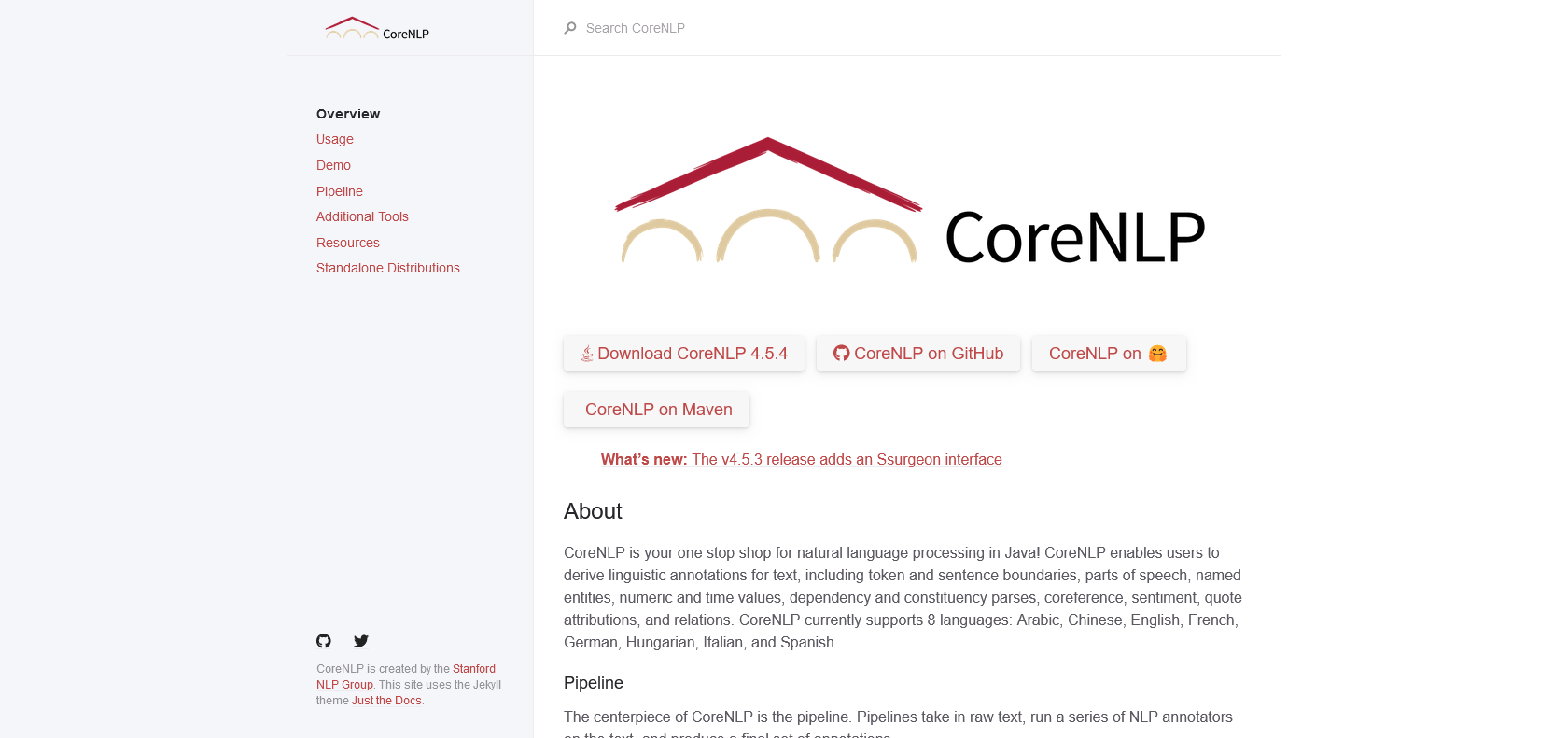Discover 7422 Tools

Accurate POS Tagging, Effective Information Extraction, Intuitive Interface
Discover the power of Stanford CoreNLP - a user-friendly platform for efficient text analysis, information extraction, and POS tagging.

Stanford CoreNLP is a powerful natural language processing platform that allows users to effortlessly work with human language data. This open-source library, written in Java, is highly popular among researchers, developers, and data scientists who want to build sophisticated language-based applications. Why is it so widely used? Well, Stanford CoreNLP offers a wide array of features and benefits that promise to make language processing more efficient, accurate, and intuitive.
One of the standout features of Stanford CoreNLP is its ability to provide part-of-speech tagging. This means that users can easily and accurately annotate text with information about the different parts of speech. This feature alone can be incredibly useful in various applications, such as language understanding and machine translation.
Another key feature of Stanford CoreNLP is its ability to extract meaningful information from large datasets. This is particularly valuable for data scientists who need to derive insights and valuable knowledge from massive amounts of text.
But perhaps one of the most appealing aspects of Stanford CoreNLP is its user-friendly interface. The platform offers an integrated workflow that simplifies the entire natural language processing process, making it easy for users to get started quickly. Whether you're a seasoned expert or a beginner in the field, Stanford CoreNLP strives to provide a seamless and intuitive experience.
In addition to part-of-speech tagging and information extraction, Stanford CoreNLP also offers a wealth of other features. Named entity recognition, coreference resolution, semantic role labeling, sentiment analysis, and word sense disambiguation are just a few examples of the powerful capabilities this library brings to the table.
All in all, Stanford CoreNLP is an invaluable tool for anyone working with language data. Whether you need to analyze text, extract valuable insights, or build sophisticated language-based applications, this platform has everything you need to make your work easier and more efficient.
Comprehensive Features: Stanford CoreNLP offers a wide range of language processing capabilities, including named entity recognition and sentiment analysis.
Stanford CoreNLP

Join the AI revolution and explore the world of artificial intelligence. Stay connected with us.
Copyright © 2025 AI-ARCHIVE
Today Listed Tools 201
Discover 7422 Tools